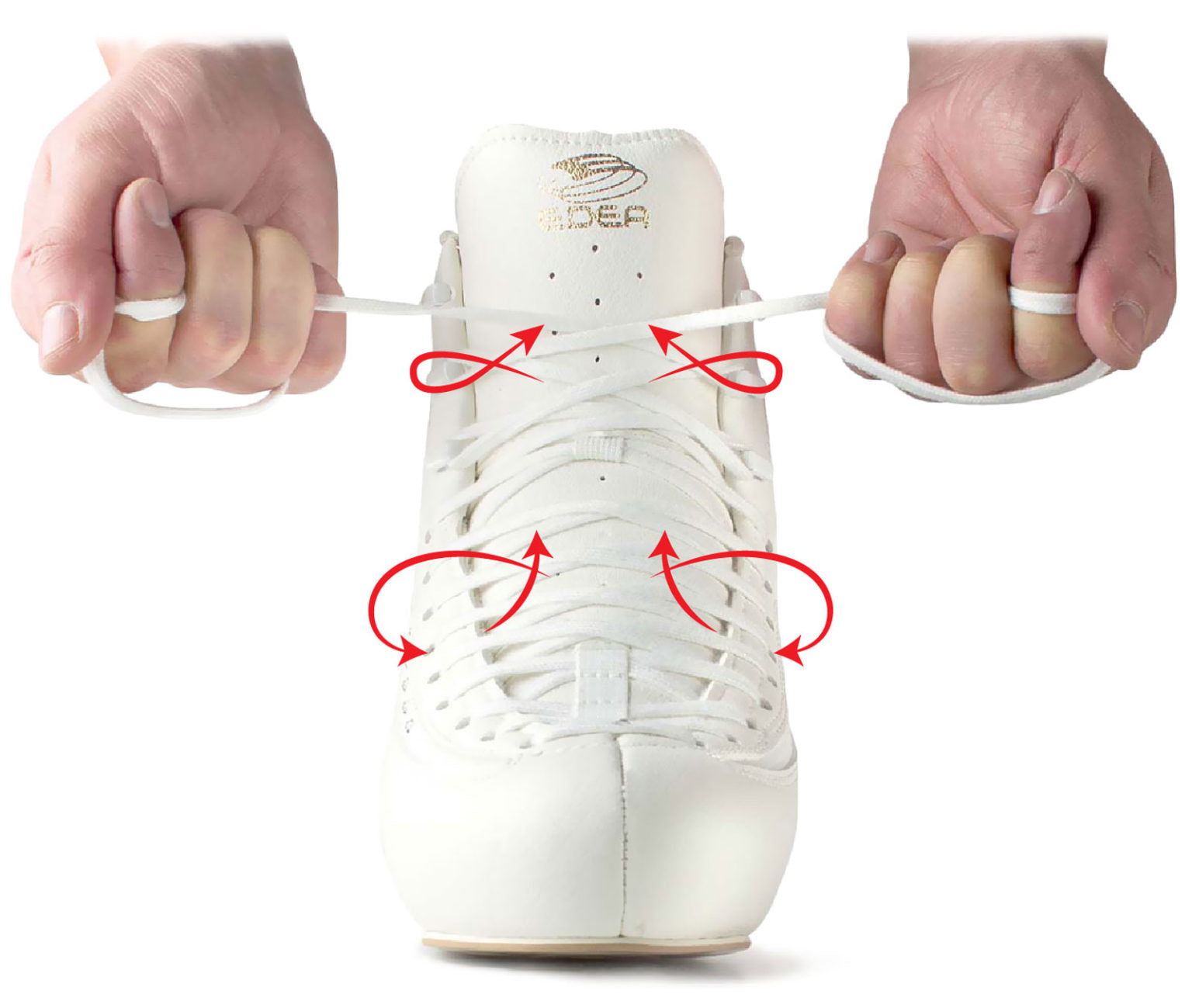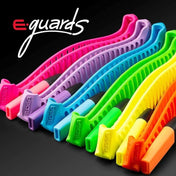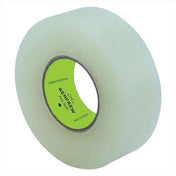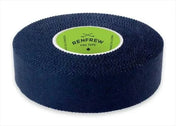WHY LACING IS SO IMPORTANT
- It improves control by holding your foot in the correct position
- It increases comfort by minimizing internal movement
- It increases movement range by combining with the tongue
- It increases durability by working with the shell to provide support
Lacing is done into two parts, first across the instep and then around the hooks.
LACING THE EDEA WAY
Edea skates are designed to support the foot and not for flex like old, traditional boots. This innovation means you need to lace the Edea way. Out-in lacing is far superior giving better hold and control than in-out lacing. The difference may seem small but the impact is huge.
OUT ➔ IN (EDEA LACING)
Why:
- Direct pressure is reduced across the instep
- Laces self-lock at each “intersection” making it more secure
- Laces are less likely to loosen under pressure
- Lacing wraps the foot uniformly increasing control and comfort
How:
- Start at the toe, insert the lace from the outside to the inside
- Tighten by pulling the laces outwards and downwards
- This will feel different but will become second nature
IN ➔ OUT LACING, THE OLD WAY
When you lace the other way (internal-external):
- more direct pressure is exerted on the top of your foot
- laces slip at the intersections and loosen more easily
- the boot opens and the foot moves reducing control
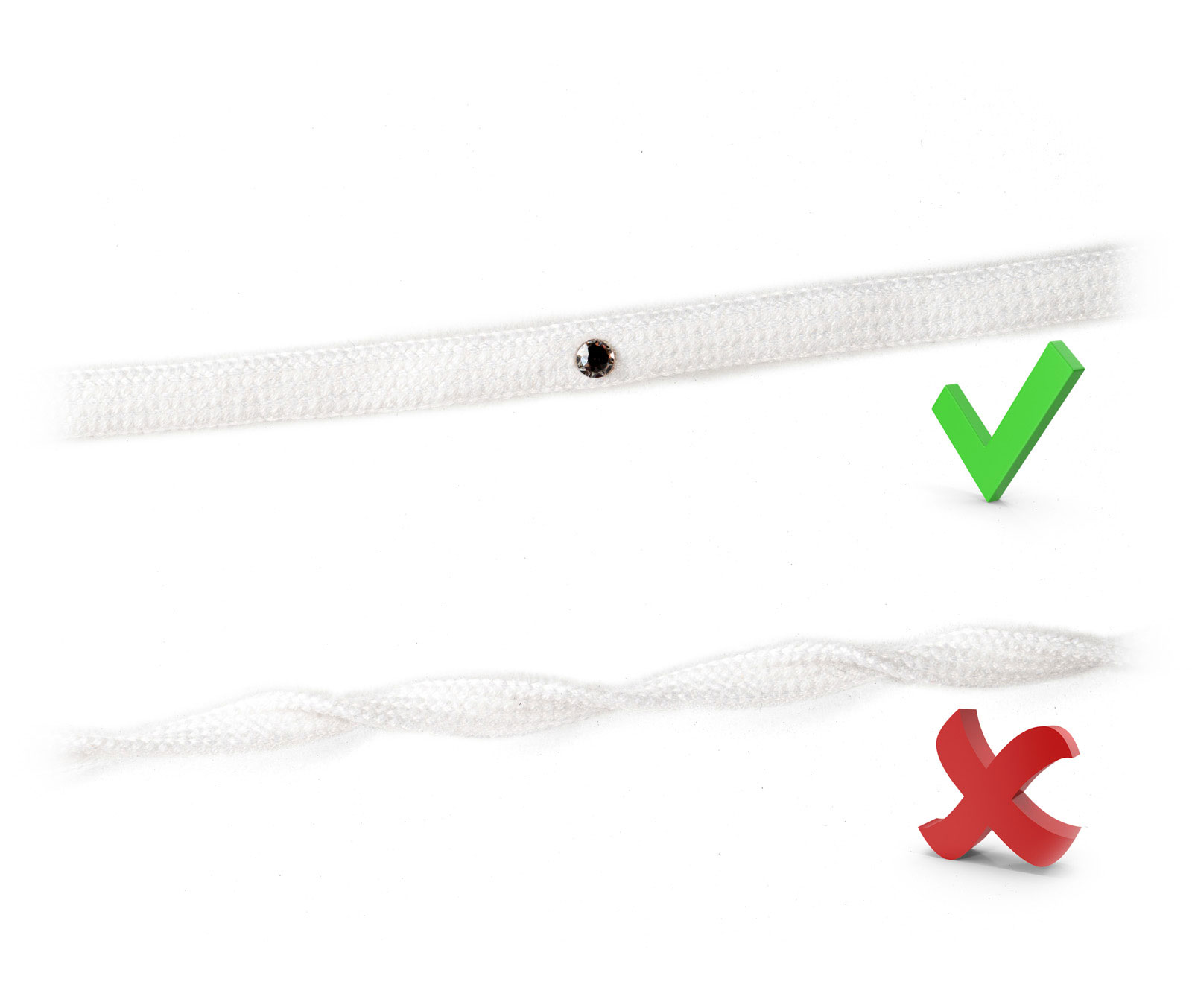
FLAT NOT TWIST
When lacing, make sure the laces stay flat and do not twist. Twisting causes slipping and stretching and makes laces wear out more quickly.
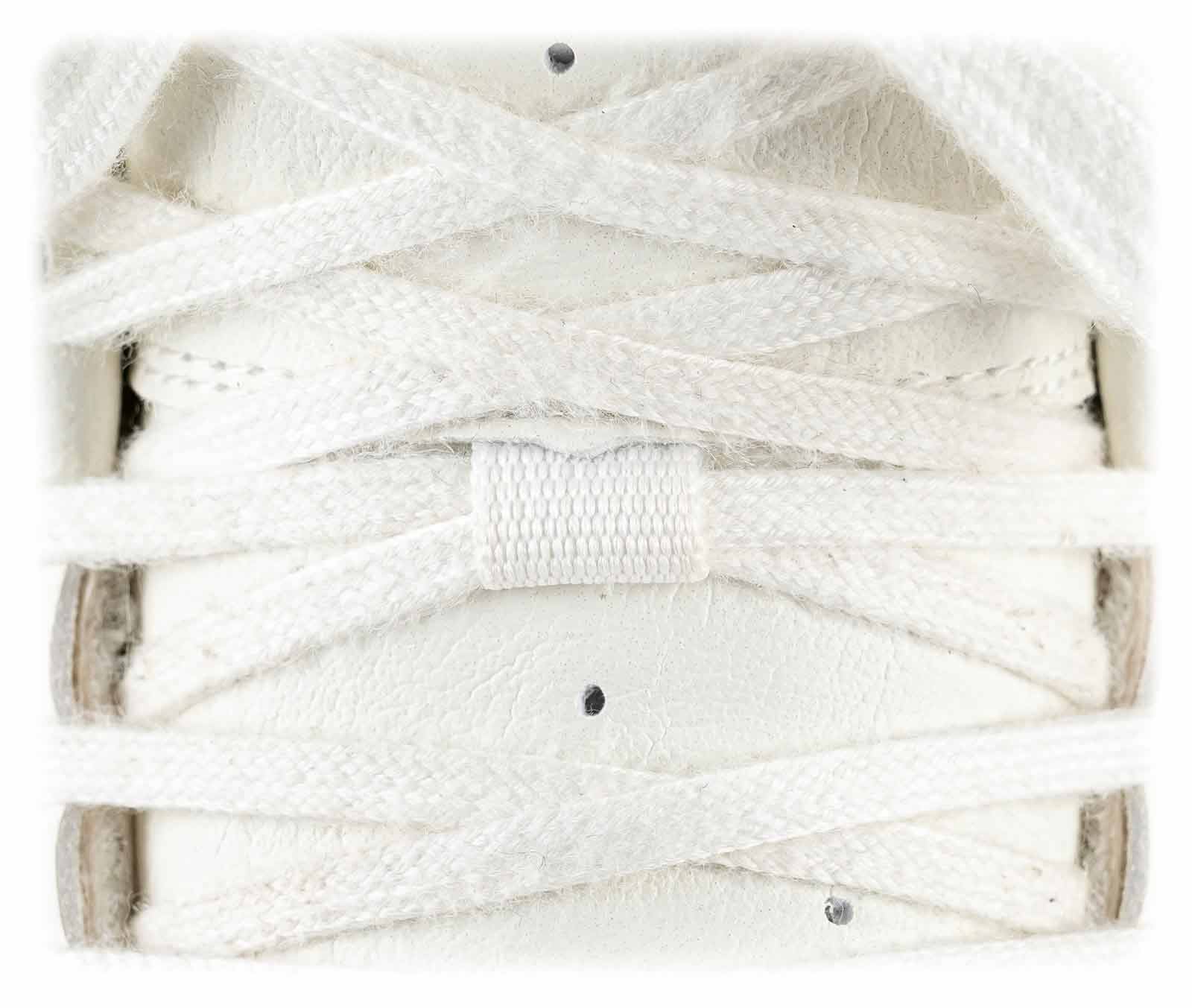
LACE TABS
Feet are asymmetrical so the tongue slips to the outside.
The lace tab, combined with correct lacing, holds the tongue in the optimal position.
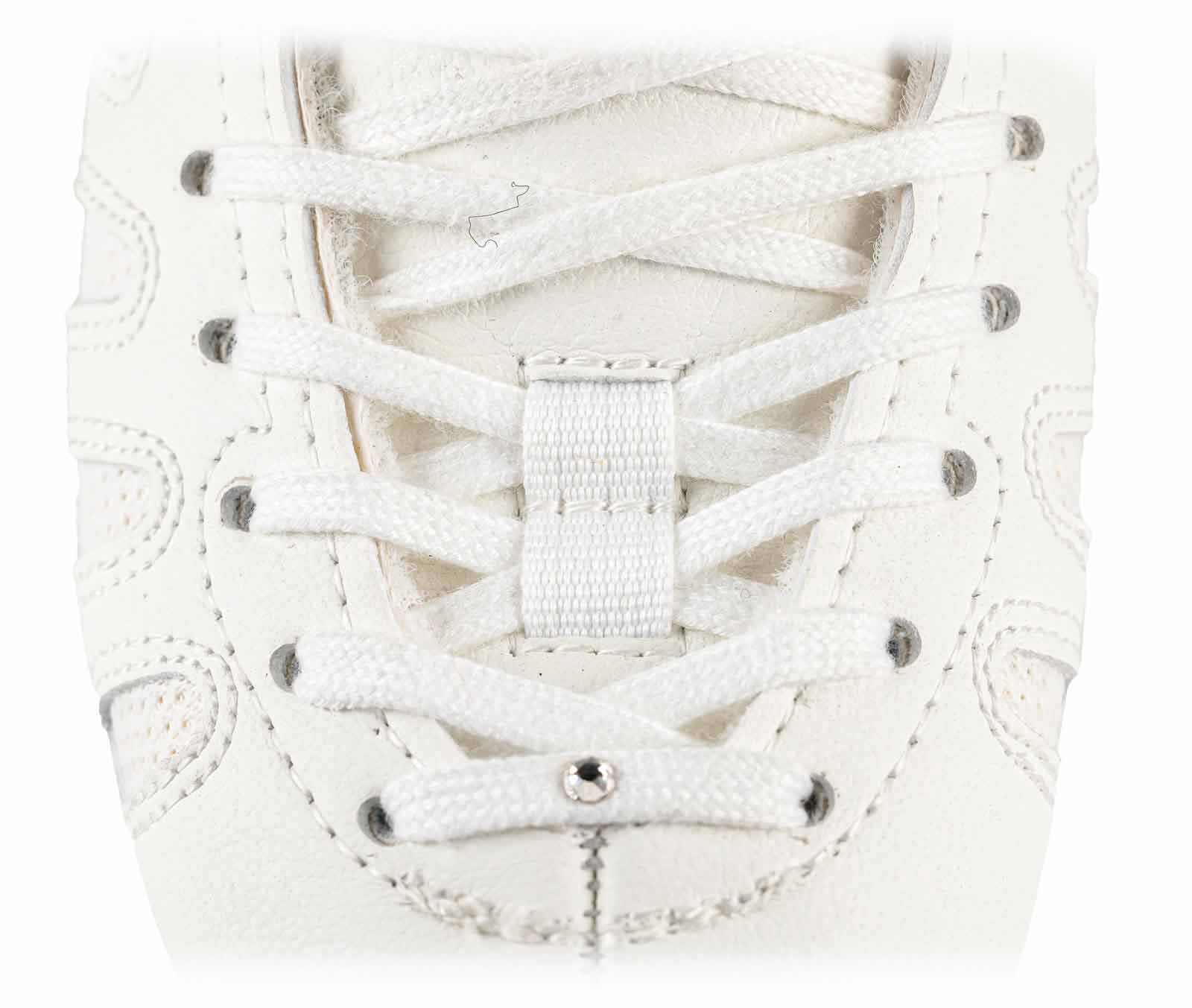
LACING THE HOOKS
There are two main ways to lace the hooks. Edea recommend the 360° wrap.
To complement the Edea out-in lacing is the 360° wrap, when you loop your lace over the hook first for better hold, control and movement range.
Why Edea recommend the ‘360° Wrap’ (over first)
- It is more secure as it wraps around the hook
- It pulls the boot together making it more secure
- Takes pressure off the hooks giving better support
- The “V” pattern allows for even deeper pushes and knee bends
- It increases the longevity of the boots
How:
Once the instep is laced:
- Pull both laces up in front of the tongue
- Wrap the laces from the top around of the hooks
- Cross and pull tight. Repeat for next hooks!
The “V” pattern
Some skaters wrap the top hook then the middle to increase the “v” lowering the knot and increasing the movement range.
UNDER FIRST
Lacing the top hooks under first reduces your performance because:
- It reduces movement range
- it creates uneven pressure on the leg
- it reduces the hold of the laces
- it puts more strain on the hooks
Edea do not recommend this method for the top hooks.
4 HOOK MODELS
The new innovative fourth hook on Tempo, Wave and Verve, has been introduced to make lacing easier. To close the instep more effectively this extra hook should be laced bottom to top to allow the shell to wrap the foot. The remaining three hooks should be laced in the 360° wrap method for better performance.
The extra depth around the hook that the windows provide allow the laces to easily wrap around the hook and lock.
HOW TIGHT SHOULD I LACE MY BOOTS?
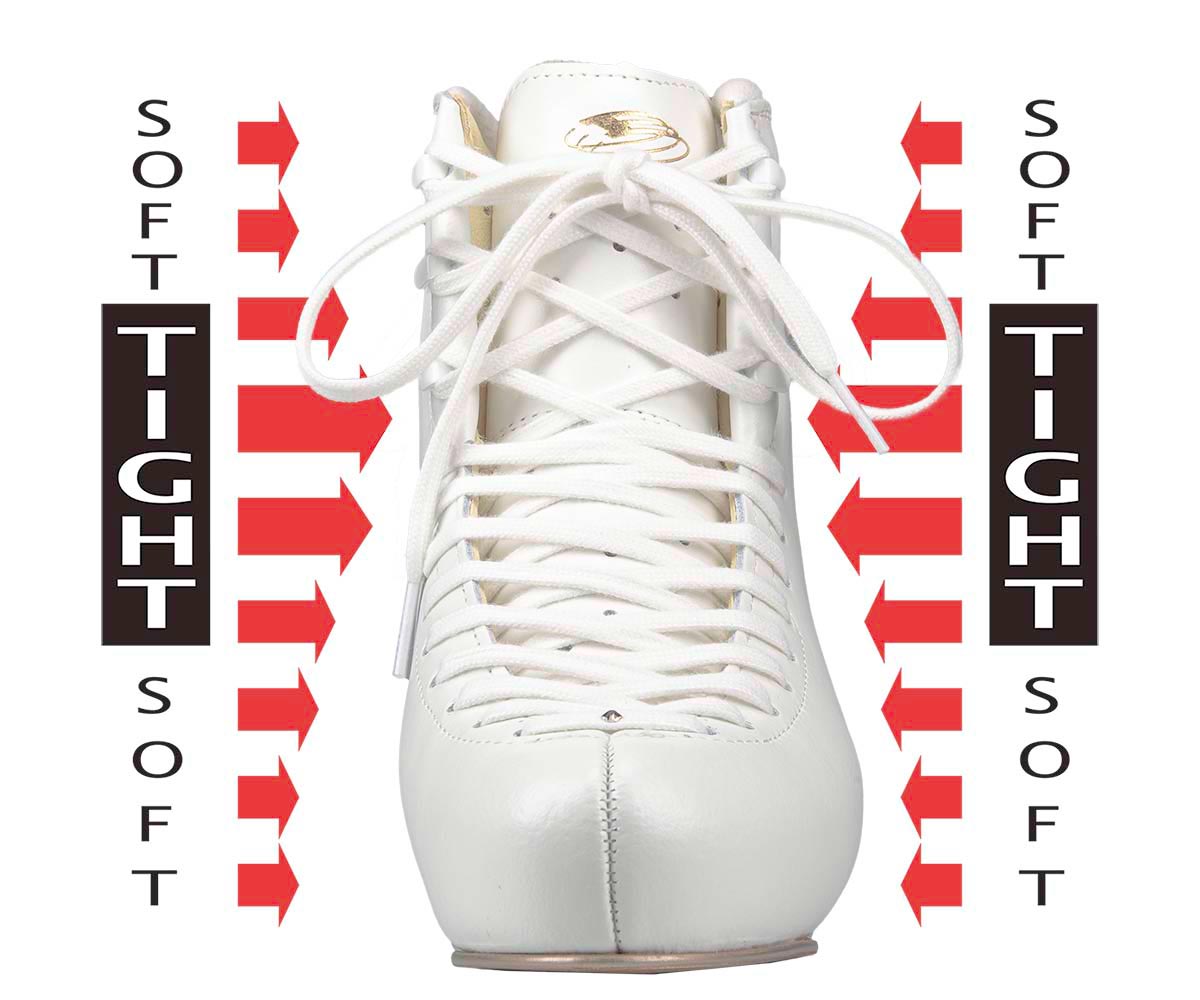
Lacing should keep the heel in its pocket, minimizing movement. To do this, it is important to lace the last eyelets and the first hook more tightly. This creates an “hourglass” lacing effect:
- SOFT across the top two hooks to keep movement range. You should be able to put two fingers between the tongue and the front of your leg
- TIGHT across the top three eyelets and first hook
- SOFT across the toes to allow for the minimal movement required
Once laced, check the tension by passing a finger across the lacing intersections. The laces should not move.
Pulling the laces tight enough with your fingers is hard. The lace puller makes it easier, quicker and gives the perfect tightness.
UNLACING THE BOOT

Lacing holds the foot in place with tension, this needs to be released off the ice. Your boots need to relax, too!
- unlace completely before removing feet, otherwise you risk injury and damage the boots
- leaving boots laced causes them to narrow and get an Aladdin’s tip.
Not unlacing doesn’t save time, it just spends money!
A Lace Puller makes undoing the boot easier, no broken nails and no damaged boots.
Loose laces mean the boots keep their shape, the tongue its flexibility and they dry more effectively.
Boots are ready for the next session!

